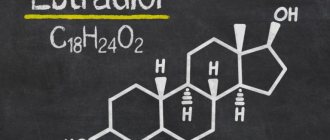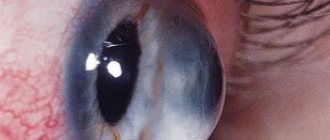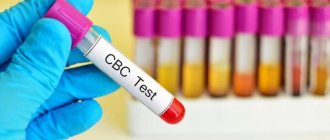Published: 01/26/2018 Updated: 03/09/2021
Vitamin deficiency can occur for a variety of reasons. The main ones include:
- monotonous diet;
- improper preparation of food;
- diseases of the gastrointestinal tract;
- pregnancy and lactation;
- stressful conditions and nervous overload;
Vitamin B1
Cellular energy booster that promotes growth and development. Vitamin B1 increases mental and physical performance, improves detoxification function and metabolism in the nervous system. It also improves mood, has a mild analgesic and wound-healing effect.
Vitamin B1 deficiency causes various disorders in the nervous, cardiovascular and digestive systems. To compensate for its deficiency, include buckwheat, corn, cashews, and lentils in your diet.
Main symptoms of vitamin B1 deficiency
- loss of appetite;
- violation of movement coordination;
- depression, nervousness;
- weakening of cognitive functions (memory loss);
- muscle weakness.
An extreme form of vitamin deficiency is Beriberi disease, which damages the peripheral nerves or the cardiovascular system. As a result, muscles, especially the legs, become exhausted, severe pain appears in the calves, weakness develops, and gait worsens.
Causes of Vitamin B1 Deficiency
- constant consumption of refined products (high-grade flour and products made from it, polished rice);
- increased need for vitamin (pregnancy, breastfeeding, stress, physical activity, infections);
- chronic diseases (diabetes mellitus, thyrotoxicosis, antibiotic poisoning, alcoholism);
- smoking;
- Excessive consumption of tea and coffee, as caffeine destroys vitamin B1.
If you notice that your mood has worsened, cramps have appeared in the calf muscles, and your appetite has disappeared against the background of constant stress, perform the study 95-10-201 - Vitamin B1 (thiamine) in CITILAB. The analysis helps to identify vitamin B1 deficiency, prescribe medications in a timely manner and adjust the diet.
Neurological manifestations of vitamin B12 deficiency
Based on an analysis of domestic and foreign literature, the prevalence in the population and the causes of vitamin B12 deficiency, pathogenetic mechanisms and clinical manifestations of nervous system pathology caused by such deficiency are considered. The most informative diagnostic methods and treatment regimens for neurological disorders due to vitamin B12 deficiency are analyzed.
Possible algorithm for diagnosing vitamin B12 deficiency in adults
Vitamin B12 is a water-soluble vitamin that is naturally produced by microorganisms but is not synthesized in the human body. The average daily requirement for vitamin B12 is 2.4 mcg for men and non-pregnant women, 2.6 mcg for pregnant women, 2.8 mcg for lactating women [1].
The main source of vitamin B12 is animal proteins (meat, liver, kidneys, fish, dairy products, egg yolks). Vitamin B12 reserves in the adult human body are approximately 2000–5000 mcg. Vitamin B12 is deposited mainly in the liver (1 mcg per 1 g of liver tissue), in smaller quantities in the kidneys and skeletal muscles. B12 is excreted in bile and feces; 0.1% of the total amount of deposited vitamin is lost per day. There is an intestinal-hepatic circulation of vitamin B12 - about 3/4 of the vitamin excreted in bile is reabsorbed in the intestine through the portal vein system of the liver (enterohepatic circulation). This explains the development of clinical manifestations of B12 deficiency 1–3 years after the complete cessation of its entry into the body [2].
In foods, B12 is usually found in the form of the coenzyme deoxyadenosylcobalamin or methylcobalamin and is bound to proteins. The first step in vitamin B12 metabolism is proteolysis in the stomach at low pH, resulting in its release from dietary protein and binding to the R protein of gastric juice. The parietal cells of the stomach produce intrinsic Castle factor, a glycoprotein that, together with the protein complex “cobalamin-R”, enters the duodenum. The complex of intrinsic factor Castle and cobalamin in the ileum binds to intrinsic factor cobalamin receptors located on the microvilli of the cells of the ileal mucosa. At a neutral pH and in the presence of calcium ions, the cobalamin-Castle factor complex disintegrates, cobalamin enters the enterocyte, is transferred to transcobalamin II (holotranscobalamin) and, in combination with it, enters the bloodstream. If there is a large amount of vitamin B12, about 1% can penetrate into the blood due to passive diffusion [1, 2].
B12 is involved in many key processes in the metabolism of lipids, carbohydrates and proteins, and plays a central role in hematopoiesis. In the human body, vitamin B12 serves as a cofactor for the work of two enzymes - methylmalonyl coenzyme A (CoA) mutase in mitochondria and methionine synthetase (MeCbl) in the cytoplasm. Vitamin B12 is involved in the synthesis of nucleic acids: bound to MeCbl, it facilitates the removal of the methyl group from methylfolate to form homocysteine (HCYS), which is converted to methionine. Vitamin B12 is essential for cellular respiration and energy maintenance as it is involved in the Krebs cycle. B12 is involved in the processes of myelination and normal formation of the neural tube at the stage of embryogenesis, the synthesis of nucleic acids, protein and lipid structures of the myelin sheath of the nerve fiber, choline and neurotransmitters [2, 3].
Causes of vitamin B12 deficiency
There are many reasons for the development of vitamin B12 deficiency. They can be divided into several groups.
Insufficient intake of vitamin B12 from food
B12 deficiency can be caused by insufficient consumption of animal proteins for various reasons (old age, low social status, in particular in people suffering from chronic alcoholism). Most vegetarians only get 0.25–0.5 mcg of cobalamin per day. It is no coincidence that the prevalence of vitamin B12 deficiency among them reaches 40–80% [3].
Impaired absorption and metabolism of vitamin B12 in the gastrointestinal tract
Similar conditions occur in patients after operations on the stomach or small intestine, including after bariatric operations for morbid obesity, people suffering from atrophic gastritis (usually elderly people), patients with diseases of the small intestine, pancreatic insufficiency and malabsorption syndrome, celiac disease , helminthic infestations, diverticular disease. B12 deficiency often develops with burn disease or severe trauma during renal replacement therapy, as well as with chronic exposure to toxigenic mold and mycotoxins (more often found in water-damaged buildings). Impaired absorption and metabolism of vitamin B12 can be caused by genetic defects that impair the synthesis of cobalamin transporters [2, 4].
Increased need for vitamin B12
Pregnant and lactating women, young children, patients with HIV/AIDS, hemolytic anemia experience an increased need for vitamin B12.
A decrease in vitamin B12 levels is one of the etiological factors for a number of congenital defects. We are talking primarily about defects in the formation of the neural tube.
Low concentrations of vitamin B12 (
Side effects of a number of drugs and chemicals
The development of vitamin B12 deficiency is associated with the use of proton pump inhibitors and H2 blockers that reduce gastric acidity, metformin, levodopa, angiotensin-converting enzyme inhibitors, colchicine, cholestyramine, and nitrous oxide [5–7].
Clinical manifestations of vitamin B12 deficiency
The main clinical manifestations of vitamin B12 deficiency include megaloblastic anemia and damage to the nervous system caused by demyelination in the substance of the brain and spinal cord, as well as peripheral nerves.
Megaloblastic anemia
Megaloblastic anemia is a disease characterized by the presence of megaloblasts (altered erythroblasts characteristic of the embryonic type of hematopoiesis) in the bone marrow and peripheral blood. The incidence of the disease in adults is 2:10,000, more often observed in women over 60 years of age.
Deficiency of vitamin B12 and folic acid is the main cause of megaloblastic anemia. Classic pernicious (malignant) anemia is more common in older people and is caused by the formation of antibodies to the H+, K+-ATPase of gastric parietal cells, resulting in decreased production of intrinsic factor Castle and the absorption of vitamin B12. However, there is no clear correlation between the level of vitamin B12 in the blood and the presence and severity of anemia.
With B12 deficiency, the enzyme methionine synthetase becomes inactive, the synthesis of nucleic acids, DNA, and, to a lesser extent, RNA and protein is impaired. Failure in cell division leads to cell growth without division, which is manifested by macrocytosis. A peripheral blood smear reveals hypersegmented neutrophils, “splintered” nuclei in erythrocytes (Jolly bodies and Cabot rings) and hyperchromic erythrocytes. Altered red blood cells are quickly destroyed by the reticuloendothelial system (extramedullary hemolysis), which leads to the development of anemia, thrombocytopenia or pancytopenia [2, 8, 9].
B12 deficiency can cause damage to both the central and peripheral nervous systems. In approximately 15% of cases, neurological disorders are not accompanied by characteristic hematological changes [10, 11].
Brain damage
Myelin destruction due to vitamin B12 deficiency occurs in the white matter of the brain. In this case, there are various clinical manifestations of encephalopathy.
In many cases, vitamin B12 deficiency debuts with psycho-emotional disorders (fatigue, drowsiness, apathy, depression, emotional lability, aggressiveness, visual and auditory hallucinations, acute psychotic reactions). Focal changes in white matter, usually detected in the frontal and parietal lobes of the brain and the corpus callosum, can lead to memory loss and impairment of higher brain functions, including the development of dementia [10, 11]. Cognitive impairment reaching the level of dementia is observed in 4–16% of patients with pernicious anemia [11].
Among the scientific works of recent years, one can find many publications devoted to the study of dementia and the potential role of homocysteine, folic acid and vitamin B12 in its pathogenesis.
Dementia caused by vitamin B12 deficiency does not have specific clinical manifestations. In most cases, there is a rapid progression of cognitive impairment with transient episodes of confusion; dementia is accompanied by emotional disturbances, mainly depression. Brainstem and cerebellar disorders are rarely recorded [11–13].
In a number of cases, when examining patients with cognitive and mental disorders, presumably developed due to vitamin B12 deficiency, a slight increase in protein levels is recorded in the cerebrospinal fluid. An electroencephalogram can reveal diffuse slow-wave activity, a magnetic resonance imaging scan can reveal atrophy of the substance of the cerebral hemispheres, focal changes in the white matter – more often in the hemispheres, less often in the brain stem and cerebellum [11, 14].
Data on the possible reversibility of cognitive impairment associated with vitamin B12 deficiency are varied. The literature describes cases of almost complete restoration of cognitive functions and regression of emotional disorders (depression) with mild severity of the defect and the duration of the disease no more than a year. However, in some cases, even normalizing the level of vitamin B12 in the blood does not improve cognitive functions. As a rule, this is observed with a significant duration of the disease, the presence of a neurodegenerative disease (Alzheimer’s disease, etc.) [11, 15].
It has now been established that B12 deficiency can be considered one of the risk factors for the development of acute cerebrovascular and cardiovascular pathologies of atherothrombotic origin. The metabolism of vitamin B12 is closely related to the metabolism of the amino acid homocysteine. Deficiency of B12 and folic acid is a major risk factor for the development of acquired hyperhomocysteinemia [16].
In recent years, many studies have been conducted, the results of which have confirmed that hyperhomocysteinemia is an independent risk factor for venous thrombosis and is associated with more rapid progression of atherosclerotic lesions of large arteries, and therefore with an increased risk of ischemic stroke [17, 18].
Magnetic resonance imaging (MRI) of the brain reveals more significant cerebral and hippocampal atrophy in patients with elevated serum homocysteine levels [11, 14].
A number of studies have shown that hyperhomocysteinemia increases the risk of developing both vascular dementia and Alzheimer's disease, which may indicate common pathogenetic mechanisms of these diseases.
The development of cognitive impairment in hyperhomocysteinemia is based on several pathological processes: cerebral microangiopathy, endothelial dysfunction, oxidative stress, increased neurotoxicity of beta-amyloid and apoptosis [11].
The literature also discusses the role of deficiency of B vitamins, folic acid and hyperhomocysteinemia in the pathogenesis of the most common movement disorder - Parkinson's disease.
According to the results of the LiangShen study, vitamin B12 levels in patients with Parkinson's disease are significantly lower than in patients in the control group. However, there is no evidence that taking supplements containing vitamin B12 and folic acid can reduce the risk of developing Parkinson's disease. For vitamin B6, the evidence is the opposite: consuming higher concentrations of vitamin B6 may be associated with a reduced risk of developing Parkinson's disease. It is assumed that vitamin B6 reduces this risk not by affecting homocysteine metabolism, but by reducing oxidative stress. Meanwhile, additional research is required to test this hypothesis and clarify the pathogenetic mechanisms of the protective effect of vitamin B6 on the risk of developing Parkinson’s disease.
A number of studies have shown that B12 inhibits alpha-synuclein fibrillogenesis and modulates the enzyme kinase 2 (LRRK2), which is involved in the pathogenesis of Parkinson's disease [5].
In addition, a number of studies have demonstrated a high incidence of polyneuropathic syndrome in patients with Parkinson's disease. According to the literature, its frequency varies from 19 to 55%, while in healthy individuals comparable in age, polyneuropathy develops only in 8–9% of cases. Damage to peripheral nerves in Parkinson's disease manifests itself predominantly as axonal sensorimotor polyneuropathy. The severity correlates with the stage of the disease according to the Hoehn–Yahr scale.
Considering the data presented on the risk of developing vitamin B12 deficiency in patients receiving levodopa treatment, it can be assumed that the higher prevalence of polyneuropathy in patients with Parkinson's disease is due to vitamin B12 deficiency [5].
Subacute combined degeneration of the spinal cord (funicular myelosis)
Vitamin B12 deficiency leads to damage to the spinal cord substance with the development of the clinical picture of funicular myelosis. Myelin damage is associated with the toxic effect of methylmalonic acid, formed during the breakdown of fatty acids and some amino acids. With vitamin B12 deficiency, the work of the enzyme methylmalonyl-CoA mutase, which destroys methylmalonic acid, is disrupted, its accumulation, acidosis occurs, followed by damage to the myelin sheath and secondary axonopathy, mainly of the nerve fibers of the posterior columns and lateral cords of the spinal cord. In addition, demyelination may be caused by impaired synthesis of choline, lecithin and sphingomyelin due to a lack of methionine due to B12 deficiency, and the incorporation of abnormal fatty acids into the myelin sheath [2, 19, 20].
There are three forms of funicular myelosis: posterior columnar (mostly the posterior cords are affected), pyramidal (mostly the lateral columns are affected) and combined (combined damage to the lateral and posterior columns).
The disease may begin with the appearance of nonspecific complaints caused by the development of anemia. Patients may complain of tingling and changes in the color of the tongue (bright crimson, “varnished”). Later, paresthesia appears in the extremities in the form of a crawling sensation, tingling, burning, more pronounced in the toes, then motor disturbances (mainly weakness in the legs) and sensory ataxia. Paresis in the legs can be spastic, flaccid or mixed, depending on the degree of involvement of the pyramidal tracts in the lateral cords of the spinal cord. The upper extremities are affected much less frequently and to a lesser extent. Lhermitte's symptom is often encountered - a sensation of electric current passing from top to bottom along the back when the head is tilted forward due to damage to the posterior cords of the spinal cord. Sensory and motor disorders are often accompanied by dysfunction of the pelvic organs (urinary urgency or urinary retention).
The literature describes both slow and rapid progression of funicular myelosis, in which a picture of transverse myelitis with lower paraplegia and pelvic disorders can form within two to three weeks [2, 20].
The diagnosis of funicular myelosis does not cause difficulties in the presence of a clinical picture of damage to the posterior and lateral cords of the spinal cord in combination with macrocytic anemia. But sometimes severe neurological disorders develop even with normal hemoglobin levels and the absence of hematological laboratory changes. In addition, due to the widespread use of B vitamin preparations, funicular myelosis often occurs with an atypical clinical picture. The diagnosis is confirmed by the results of a study of the concentration of vitamin B12 in the blood, revealing its deficiency, increased levels of homocysteine and methylmalonic acid in the blood, sternal puncture with examination of the microscopic picture of the bone marrow, as well as MRI, mainly of the cervical and thoracic spine, during which a hyperintense signal was detected on T2-weighted images from the posterior and lateral columns of the spinal cord [19].
The prognosis of the disease is influenced by the duration of the period of manifestation of neurological symptoms before treatment, regardless of the presence and severity of anemia. When starting treatment several weeks or months after the onset of symptoms of spinal cord damage, one can expect a significant improvement in the patient's condition or even complete regression of neurological symptoms. In the later stages of the disease, it is possible to only slightly improve or stabilize the process [19, 20].
Damage to the peripheral nervous system
In addition to damage to the brain and spinal cord, vitamin B12 deficiency is often accompanied by damage to the peripheral nervous system, which usually manifests itself as distal sensory polyneuropathy. Polyneuropathy is of a mixed nature (axonopathy and myelinopathy). The clinical picture of B12-deficiency polyneuropathy is nonspecific: paresthesia in the extremities (usually the legs) is one of the first to occur, followed by disturbances in pain and temperature sensitivity of the “gloves and socks” type, weakening of vibration sensitivity, loss of Achilles reflexes, and instability when walking. Often B12-deficiency polyneuropathy is combined with funicular myelosis.
In approximately 5% of cases with vitamin B12 deficiency, atrophy of the optic nerves is observed with the appearance of central scotomas and decreased visual acuity. Miosis with preserved pupillary reactions is rare. Sometimes there are disturbances of taste and smell. In some cases, the autonomic nervous system is affected, which is accompanied by orthostatic hypotension and fainting, impotence, fecal and urinary incontinence, and increased urge to urinate.
In most cases, damage to the peripheral nervous system is characterized by a slowly progressive course over weeks or months [11, 21].
Diagnosis of vitamin B12 deficiency
In neurological diseases caused by vitamin B12 deficiency, early diagnosis of the deficiency state and, accordingly, early initiation of etiotropic and pathogenetic therapy are extremely important. Only when treatment is started in the early stages can neurological deficits be prevented.
As already noted, the diagnosis of vitamin B12 deficiency is based on the clinical picture and laboratory results. Some symptoms of vitamin B12 deficiency can be recognized by external examination of the patient. We are talking about acrohyperhidrosis, Hunter's glossitis (“lacquered” tongue), stomatitis, cheilitis, xerostomia, hypopigmentation and vitiligo, as well as hyperpigmentation in the bends of the limbs, on the soles and palms [2, 22].
During laboratory examination, in typical cases, a general blood test reveals pancytopenia and macrocytic anemia, and when examining bone marrow puncture, megaloblastic hematopoiesis is detected. However, neurological symptoms may precede the development of megaloblastic anemia and not be accompanied by abnormalities in blood tests [22, 23].
In recent years, it has become possible to quantify the level of vitamin B12 in blood serum. In a patient with clinical and laboratory features consistent with vitamin B12 deficiency, measurement of total plasma vitamin B12 levels by chemiluminescence is considered a first-line test. In case of vitamin B12 deficiency (less than 148 pmol/l), the sensitivity of the method reaches 90–95%, specificity – 80%. For subclinical deficiency (less than 220 pmol/l), the sensitivity of the method varies from 40 to 80% [23, 24].
Currently, combination preparations of B vitamins are very popular in our country and are prescribed to many patients. Against this background, it is difficult to detect cyanocobalamin deficiency in a laboratory. More sensitive laboratory signs of B12 deficiency include elevated levels of surrogate markers of vitamin B12 deficiency: methylmalonic acid (MMA) and total HCYS. Vitamin B12 deficiency is associated with elevated plasma concentrations of HCYS > 12 µmol/L and MMC > 0.4 µmol/L. However, one should not focus only on these indicators, since an increased level of HCYS occurs with a deficiency of folate, vitamin B6, and hypothyroidism, and an increased level of MMK occurs with liver and kidney failure [22, 24].
Another method for diagnosing B12 deficiency is to determine the level of holotranscobalamin in the blood serum. Normally, the concentration of holotranscobalamin ranges from 19–42 to 134–157 pmol/l. The advantage of the method for determining the concentration of holotranscobalamin is that its level in the blood is quite stable and practically not subject to fluctuations under various physiological conditions of the body (pregnancy, taking certain medications) [22].
Thus, there is currently no gold standard for laboratory diagnosis of vitamin B12 deficiency. To accurately diagnose its deficiency, a comprehensive assessment of clinical manifestations and laboratory data (total B12 levels in plasma and cerebrospinal fluid, serum levels of holotranscobalamin, homocysteine and MMC) is necessary.
The figure shows a possible algorithm for diagnosing vitamin B12 deficiency in adults [25].
Treatment of neurological manifestations of vitamin B12 deficiency
The goals of therapy for B12 deficiency conditions are normalization of laboratory blood parameters and gradual regression of neurological deficit. Along with medicinal replenishment of vitamin B12 deficiency, an examination and a thorough history taking are necessary to identify the cause of the development of the deficiency state and its elimination or correction. The prognosis for functional recovery depends on the initial degree of damage to the nervous system: with mild disorders and early treatment, complete or almost complete recovery is possible; with more severe ones, residual neurological deficit is inevitable.
Patients with proven vitamin B12 deficiency can receive therapy in the form of oral forms of the vitamin, as well as parenterally (mainly intramuscularly), depending on the severity of the neurological manifestations, the severity of the disease and the cause of the deficiency.
As a rule, patients in the absence of malabsorption in the gastrointestinal tract (GIT) in the case of gradual development of a neurological defect and mild or moderate severity of its severity are advised to take oral medications containing 1 mg of cobalamin daily. In cases of severe neurological defect and acute development of the disease, as well as in conditions that can potentially impair the absorption of vitamin B12 in the gastrointestinal tract, it is advisable to begin therapy with parenteral forms of the vitamin and its intramuscular administration in a dose of 1 mg [26, 27].
There is no consensus on the optimal doses of vitamin B12 aimed at correcting neurological and hematological manifestations of deficiency.
The study compared the effectiveness of treatment with different doses of oral vitamin B12 in elderly patients with B12 deficiency. It has been established that the optimal dose of oral vitamin B12 required to reduce SUA levels by 80–90% is 647–1032 mcg/day [28].
Initial treatment regimens and duration of vitamin therapy vary among studies, institutions, and countries.
One of the proposed treatment regimens involves intramuscular injections of cobalamin - 8-10 injections over two months, followed by monthly injections of 1 mg of the drug. Other regimens include oral cobalamin daily for ten days, then weekly for four weeks, followed by monthly oral dosing. The British National Formulary recommends the use of 1 mg vitamin B12 intramuscularly three times a week for two weeks and then once every three months for patients with megaloblastic anemia without neurological syndromes. In the presence of neurological symptoms, intramuscular administration of 1 mg of B12 every other day for three weeks is advisable. Treatment can be continued depending on the clinical situation. Patients with vitamin B12 deficiency whose causes cannot be corrected typically require lifelong treatment to prevent recurrence of the disease [26].
The hematology manual [27] suggests the following regimen for the treatment of B12-deficiency anemia: cyanocobalamin 1000 mcg intramuscularly daily for 4–6 weeks, after normalization of blood counts, 1000 mcg intramuscularly once a week, then 1000 mcg once a month for life, if it is impossible to eliminate the cause of vitamin B12 deficiency. A similar scheme is also applicable for severe neurological disorders caused by vitamin B12 deficiency. Patients treated for vitamin B12 deficiency undergo laboratory monitoring of hemoglobin and vitamin B12 levels every few months [27].
When cyanocobalamin is taken orally in high doses (1000–2000 mcg), passive (due to diffusion) absorption of 1% of the consumed dose is possible. A number of studies have shown that oral administration of vitamin B12 in high doses is not inferior in effectiveness to intramuscular administration [24, 28]. The hematology manual also suggests an alternative treatment regimen to intramuscular administration of vitamin B12: daily administration of the drug at a dose of 2000–4000 mcg for 4–6 weeks, then 1000 mcg of cyanocobalamin once a month for life [27].
In Russia, the only medicinal form of vitamin B12 is cyanocobalamin, which is included in combined multivitamin preparations in tablet form in doses of 200–500 mcg. There are currently no non-injectable agents for the specific treatment of vitamin B12 deficiency.
Among the drugs containing vitamin B12, it should be noted Neurobion (Austria), which has been used in different countries for more than 50 years to treat patients with diseases of the nervous system. Neurobion is a combination of neurotropic vitamins: thiamine (vitamin B1), cyanocobalamin (vitamin B12) and pyridoxine (vitamin B6). The drug is available in two dosage forms - oral (tablets) and parenteral (solution for injection). One Neurobion tablet contains thiamine disulfide 100 mg, pyridoxine hydrochloride 200 mg and cyanocobalamin 240 mcg. One ampoule of Neurobion also contains three B vitamins: thiamine 100 mg, pyridoxine 100 mg and cyanocobalamin 1 mg.
As a rule, treatment of severe forms of damage to the central and peripheral nervous systems begins with parenteral administration of a complex of B vitamins. Neurobion injections are carried out deeply intramuscularly, 3 ml (one ampoule) once a day for ten days. Neurobion is then used in tablet form as maintenance therapy. The standard treatment course for adults and children over 15 years of age involves taking one tablet three times a day for 1–3 months, depending on the severity of clinical manifestations [29].
Patients with neurological disorders caused by vitamin B12 deficiency, in addition to replenishing its deficiency depending on the specific pathology, need nootropic and metabolic therapy, antioxidants (alpha-lipoic acid preparations). They are also prescribed rehabilitation measures (massage, physical therapy, physiotherapy). The effectiveness of rhythmic transcranial magnetic stimulation in spinal cord lesions associated with funicular myelosis has been described [20].
Conclusion
Most likely, the prevalence of vitamin B12 deficiency in the population is much higher than is commonly believed. This is due to an increase in life expectancy and, accordingly, the proportion of elderly and senile people, the high popularity of various types of diets and vegetarianism, the widespread use of drugs that can interfere with the absorption and metabolism of vitamin B12, and a number of other reasons. Clinical manifestations of vitamin B12 deficiency are very diverse and include a wide range of disorders - from classic macrocytic anemia to severe cognitive and mental disorders. Due to the lack of clear diagnostic schemes and the inaccessibility in some cases of laboratory tests, vitamin B12 deficiency often remains undiagnosed.
Early diagnosis of neurological manifestations of vitamin B12 deficiency and timely initiation of therapy are extremely important, as they make the process of neurological deficiency reversible.
Thus, the problem of B12 deficiency requires further study. It is necessary to develop clear algorithms for the diagnosis and treatment of this pathology.
Vitamin B5
Pantothenic acid (vitamin B5) has a stress-protective effect and is part of coenzyme A, which takes part in the metabolic processes of proteins, fats, and carbohydrates.
Vitamin B5 is necessary for the synthesis of vital substances such as hemoglobin, cholesterol, histamine, acetylcholine. In addition, it activates the synthesis of glucocorticosteroids (adrenal hormones), which have immunoregulatory, antiallergic, and anti-inflammatory effects. It is important to understand that without pantothenic acid, other vitamins are poorly or not absorbed at all. Mackerel, sardines, tuna, sweet bell peppers, and pine nuts will help you add a portion of the vitamin to your diet.
Main symptoms of vitamin B5 deficiency
- fatigue, weakness, apathy;
- the appearance of a burning sensation in the toes, often numbness;
- with a severe deficiency, “burning feet” syndrome occurs - excruciating pain in the legs at night.
With a lack of pantothenic acid, the production of gastric juice decreases, heart function worsens, neuritis develops, and the risk of developing skin diseases and duodenal ulcers increases.
Causes of Vitamin B5 Deficiency
- long-term malnutrition (food poor in proteins, fats, vitamin C and B vitamins);
- suppression of intestinal microflora, including long-term use of antibiotics and sulfa drugs;
- intestinal diseases of various nature.
To promptly identify pantothenic acid deficiency, go to CITILAB study 95-10-202 - Vitamin B5 (pantothenic acid).
What signs indicate its deficiency?
- chronic persistent fatigue and drowsiness
- pale skin
- nervousness, frequent mood swings
- pain in muscles and joints
- feeling of numbness in the arms and legs
- deterioration of memory and concentration
- frequent mood changes
- rapid heartbeat, feeling of shortness of breath, shortness of breath, dizziness
- bleeding gums
- pale face and raspberry-red tongue
It must be said that these signs are non-specific and you should not focus only on them. It is better to monitor your diet and regularly include foods rich in vitamin B12.
On guard of beauty. What vitamins does your skin need and how to take them? Learn more
Vitamin B6
Essentially, vitamin B6 (pyridoxine) is a metabolism “activator.” It is necessary for regulating the absorption of proteins, the exchange of amino acids involved in the synthesis of basic neurotransmitters and hemoglobin. With the participation of pyridoxine, glucose is delivered to cells, including brain cells. Vitamin B6 affects cognitive functions: improves memory, thinking, and also improves mood and helps resist stress.
Contained in many plant foods - bananas, nuts (pistachios, hazelnuts), avocados, beans, soybeans, beef liver. It is important to remember that with prolonged or improper heat treatment of foods, this vitamin is destroyed.
Main symptoms of vitamin B6 deficiency
- fatigue, depression;
- hair loss;
- “jams” in the corners of the lips.
A clear lack of vitamin B6 reduces the synthesis of dopamine, serotonin, gamma-aminobutyric acid, and melatonin. This can lead to psychological and physiological disorders, insomnia, decreased intellectual abilities, irritability, apathy, or, conversely, aggressive behavior.
Causes of Vitamin B6 Deficiency
- weakened condition, including after surgery, serious illness;
- atherosclerosis;
- cardiovascular diseases;
- pregnancy;
- long-term excess consumption of protein foods;
- increased physical activity;
- liver diseases, gastritis;
- anemia.
If you notice that your hairstyle has become less voluminous, severe dry skin has appeared in the area of the nasolabial fold, above the eyebrows, in general the skin has become drier and rougher, cuts and scratches are slowly healing - do not put off visiting a doctor. The first thing you need to do is donate blood to CITILAB for research 95-10-203 Vitamin B6 (pyridoxine), which will help determine whether there is a deficiency of vitamin B6 in the body or whether there is enough of it.
AT 6
Signs of vitamin B6 deficiency include a variety of symptoms, such as irritability/lethargy, decreased appetite/nausea, very dry skin (sicca) and others. These and other clinical signs of vitamin B6 deficiency begin to appear quite quickly, even possibly within a few weeks of deficient intake, or due to high consumption of vitamin B6. With B6 deficiency, the synthesis of hemoglobin and the absorption of iron from food deteriorate, the formation of antibodies decreases, and the processes of carbohydrate metabolism slow down. Due to a lack of vitamins, the following also develop:
- digestive problems - irritable bowel syndrome, stomatitis, seizures;
- skin problems - oily seborrhea of the A-zone, rashes on the wings of the nose, around the mouth and eyes;
- anemia;
- problems with the central nervous system - epileptic seizures, insomnia, emotionality, depression;
- polyneuropathy, mainly sensory.
In combination, vitamin B6 deficiency leads to serious problems with mental and motor activity, provokes the development of serious damage to the central nervous system, and complicates recovery after heart attacks, strokes and surgical interventions.
Vitamin B12
Vitamins B12 are a whole group of cobalt-containing biologically active substances. One of the main ones in it is cyanocobalamin. It is involved in the production of red blood cells and the process of hematopoiesis. Contained mainly in products of animal origin - meat, milk, eggs. Therefore, deficiency is most often observed in people following a strict vegetarian diet, in pregnant women who require an increased amount of B12, as well as in atrophic gastritis and chronic inflammatory diseases of the small intestine.
Main symptoms of vitamin B12 deficiency
- numbness of the limbs;
- muscle weakness;
- visual disturbances (double vision, blurred outlines of objects);
- pale skin;
- memory loss.
With a lack of vitamin B12, there is a risk of developing thrombosis and the functioning of the autonomic nervous system is disrupted.
The cause of vitamin B12 deficiency is insufficient absorption in the intestines. This may be due to a violation of the internal factor in the stomach, the development of pathogenic microflora, which can interfere with absorption in the stomach.
With age, after 40 years, the absorption of vitamin B12 becomes worse, so it is important to promptly identify its deficiency in order to prevent serious illnesses. To do this, go to CITILAB study 33-20-045 - vitamin B.
Be healthy!
Treatment methods for vitamin deficiency
Treatment of hypo- and avitaminosis is aimed at replacing the vitamin missing in the body.
An excess of vitamins in the body - hypervitaminosis - is a dangerous condition and can lead to various disorders and disorders.
Diet correction
Since the main source of vitamins is food, proper, balanced nutrition is of great importance. It is advisable to eat fresh and natural foods. It is also worth considering that fat-soluble vitamins (A, D, E, K) are preserved during heat treatment, while water-soluble vitamins (vitamins B, C) are destroyed.
Meat contains vitamins B1, B2, PP, B6, B9, H, B5, lipoic acid, A. Fish contains B12, E, D and B5. Eggs supply our body with vitamins E, D, B5, H, A; grains - B1, PP, B6, B9, E; nuts - PP and N; vegetable oils - vitamin E. Dairy products contain B2, B12, A, D; vegetables, leafy greens and fruits - vitamins C, B6, B9, K, H, P, lipoic acid, beta-carotene.
Taking vitamin supplements
In serious cases, vitamin-containing preparations (vitamin complexes and single preparations) are prescribed to compensate for the lack of vitamins. Do not forget that such drugs have a serious effect on the body and should not be abused. The course of taking vitamins must be prescribed by a doctor.
Specialist consultation
Vitamin deficiency is treated by a general practitioner (internist or family doctor).
If you observe symptoms that suggest vitamin deficiency, contact any of the clinics of JSC “Family Doctor”. Our doctors will make a diagnosis and prescribe a course of treatment based on the specifics of your case.
Make an appointment Do not self-medicate. Contact our specialists who will correctly diagnose and prescribe treatment.
Rate how useful the material was
thank you for rating







